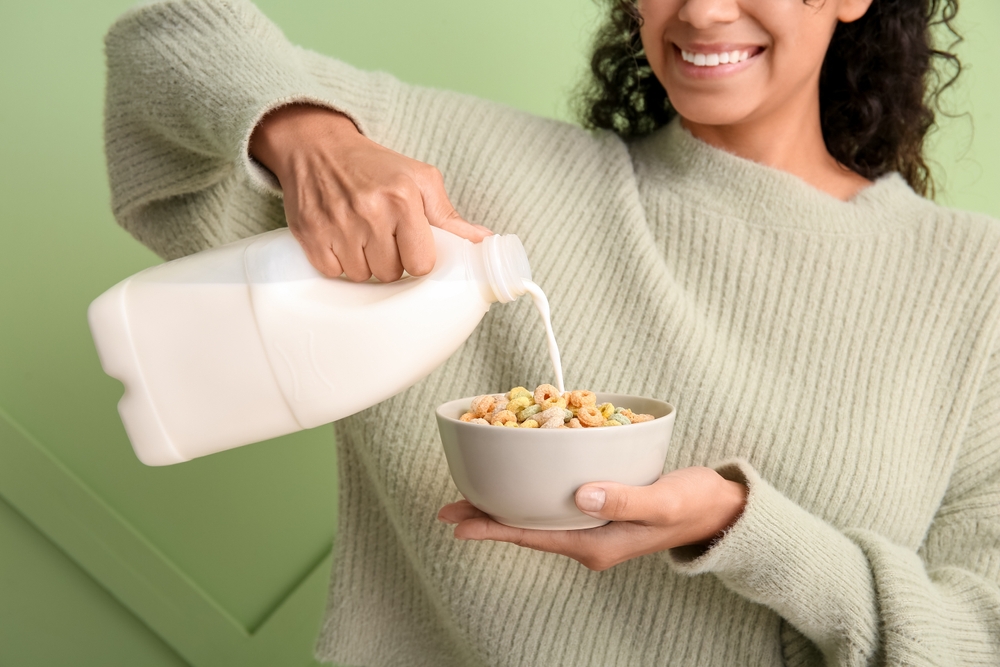Managing blood sugar is crucial for those living with diabetes — especially when it comes to the first meal of the day. Breakfast can set the tone for your blood sugar levels throughout the day. Choosing the wrong foods can lead to spikes in blood sugar, causing a roller–coaster of energy and making diabetes management more difficult. By understanding which breakfast foods to avoid, diabetes patients can take control of their health and start the day on the right foot.
The importance of a diabetes-friendly breakfast
Breakfast is often called the most important meal of the day. For diabetes patients, this statement holds even more weight. A balanced breakfast can help maintain steady blood sugar levels, prevent mid-morning cravings and support overall well-being. However, some common breakfast foods can have the opposite effect, leading to elevated blood sugar levels and complicating diabetes management.
1. Sugary cereals and breakfast bars
Many people reach for cereals and breakfast bars for a quick and convenient meal in the morning. However, most of these options are loaded with sugar and simple carbohydrates, which can lead to rapid spikes in blood sugar. Even those labeled as “healthy” or “whole grain” often contain hidden sugars.
Sugary cereals and breakfast bars have a high glycemic index (GI), meaning they are quickly digested and absorbed into the bloodstream. This process can cause blood sugar to rise rapidly, which is especially problematic for those with diabetes who need to maintain stable blood sugar levels.
Opt for cereals with high fiber content and low sugar — such as oatmeal or bran flakes. Add nuts, seeds and fresh berries for extra flavor and nutrients without the sugar rush. Choosing breakfast bars made with whole grains, nuts and seeds with little to no added sugar is also a better option.
2. White bread and pastries
White bread, croissants, muffins and other pastries might be delicious and convenient, but they are far from diabetes-friendly. These items are made with refined flour and often contain added sugars — making them a poor choice for managing blood sugar.
Refined grains found in white bread and pastries have had their fiber and nutrients stripped away, leaving behind simple carbohydrates that are quickly broken down into glucose. This can lead to a quick rise in blood sugar levels, putting extra stress on the body to produce enough insulin to manage the increase.
Whole grain bread and muffins made with high-fiber ingredients are much better options. Look for bread labeled as “100% whole grain” or “whole wheat” to ensure you’re getting a product that is less likely to cause a spike in blood sugar. Additionally, try spreading avocado or almond butter instead of sugary jams or butter to add healthy fats that help slow down the absorption of carbohydrates.
3. Fruit juices and sugary drinks
Many people start their day with a glass of orange juice or a smoothie, thinking it’s a healthy way to get vitamins and nutrients. However, most fruit juices and sugary drinks are packed with sugar and lack the fiber found in whole fruits.
Fruit juices — even those labeled as “100% natural” — can contain as much sugar as a soda. Without the fiber from the whole fruit, the body absorbs the sugar quickly, leading to a spike in blood sugar levels. Sugary coffee drinks and energy beverages can have similar effects, adding unnecessary sugar and calories.
Opt for whole fruits instead of fruit juice. Eating an apple or a handful of berries provides fiber that helps slow down the absorption of sugar into the bloodstream. If you enjoy smoothies, make them at home using fresh fruits, vegetables and a source of protein like Greek yogurt or a scoop of protein powder. Unsweetened tea, coffee or water with a splash of lemon are also good beverage choices.
4. Flavored yogurts
Yogurt can be a healthy breakfast option, but flavored yogurts often contain high amounts of added sugar. These added sugars can significantly impact blood sugar levels — making them a less suitable option for those managing diabetes.
Flavored yogurts — especially those marketed as low-fat or fat-free — often contain added sugars to enhance flavor. These sugars can quickly raise blood sugar levels and negate the potential benefits of yogurt’s probiotics and protein.
Choose plain, unsweetened Greek yogurt — which is high in protein and low in carbohydrates. You can add flavor and sweetness by mixing in fresh fruits, a small drizzle of honey or a sprinkle of cinnamon. This approach provides a balanced breakfast with the protein and fiber needed to maintain steady blood sugar levels.
5. Pancakes, waffles and syrups
Pancakes and waffles are classic breakfast favorites, but they are usually made with refined flour and topped with sugary syrups, making them a poor choice for those with diabetes.
These breakfast staples are typically low in fiber and protein but high in simple carbohydrates and sugar. This combination can lead to a rapid increase in blood sugar levels. Syrups — especially maple and flavored syrups — add an extra layer of sugar that can further exacerbate blood sugar spikes.
If you crave pancakes or waffles, try making them with whole grain flour, almond flour or oat flour, which are higher in fiber and protein. Top them with fresh fruits, a dollop of Greek yogurt or a small amount of natural nut butter instead of syrup. If you must use syrup, opt for a small amount of pure maple syrup or a sugar-free alternative to keep sugar intake in check.
Building a blood sugar-friendly breakfast
Creating a breakfast that supports blood sugar management involves choosing foods that are low in simple carbohydrates and high in fiber, protein and healthy fats. These nutrients help slow down the absorption of sugar into the bloodstream, preventing rapid spikes and crashes.
Key ingredients to include:
- High-fiber grains: Oats, quinoa and whole-grain bread
- Lean proteins: Eggs, Greek yogurt and tofu
- Healthy fats: Avocado, nuts and seeds
- Non-starchy vegetables: Spinach, tomatoes and bell peppers
Tips for a diabetes-friendly morning routine
- Plan ahead: Prepare breakfast the night before if you have a busy morning. Overnight oats, chia pudding or a smoothie prep can save time and ensure you start the day with a nutritious meal.
- Monitor portions: Even healthy foods can affect blood sugar if consumed in large quantities. Keep portion sizes in check to avoid overloading on carbohydrates.
- Stay hydrated: Drink plenty of water throughout the morning to support overall health and aid digestion.
Taking an active step toward better health
Maintaining steady blood sugar levels is essential for diabetes management, and breakfast plays a significant role in this process. By avoiding high-sugar, low-fiber breakfast foods like sugary cereals, white bread, fruit juices, flavored yogurts and traditional pancakes or waffles, individuals with diabetes can take an active step toward better health. Instead, choosing whole grains, lean proteins, healthy fats and fiber-rich fruits and vegetables can help maintain blood sugar stability and provide lasting energy throughout the day.
Making mindful breakfast choices can have a profound impact on managing diabetes. It’s not just about avoiding certain foods but also about embracing healthier alternatives that nourish the body and support overall well-being. By starting the day with a balanced, nutritious meal, diabetes patients can set themselves up for success, both in managing their condition and in leading a healthier, more fulfilling life.
This story was created using AI technology.

















